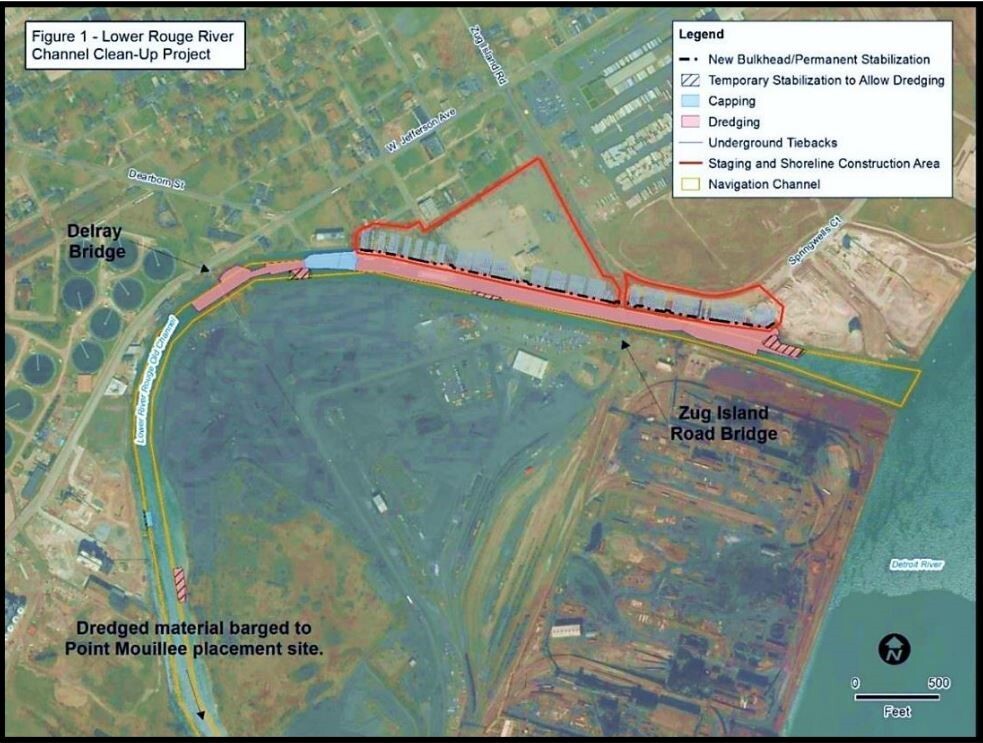FARMINGTON HILLS, Mich. (WXYZ) — The Great Lakes Restoration Initiative is a federal program that started in 2010. It aims to further protect and restore the Great Lakes and its associated waterways in both the U.S. and Canada.
Congress funds the GLRI each year, usually to the tune of around $300 million. However an additional funding boost through the Bipartisan Infrastructure Law allocates another $1 billion over the course of five years to accelerate or expand GRLI projects, nearly a dozen of them in Michigan.
The bulk of that federal money will go to address Areas of Concern (AOCs), a designation that started in the mid-1980s to identify a waterway that was especially environmentally degraded.
There's currently 25 Great Lakes AOCs in the U.S., and with that $1 billion the Biden administration has a lofty goal; completing the work on a handful of them by 2030.
Michigan's AOCs slated to have federal remediation work finished by then include:
- Clinton River
- Detroit River
- Manistique River
- Muskegon Lake
- River Raisin
- Rouge River
- St. Clair River
- St. Marys River
- Torch Lake
Ultimately the goal being to have an AOC officially de-listed, meaning it's no longer environmentally degraded and is now in recovery.
“The Rouge and the Detroit, they are big ticket items," said director of the Great Lakes National Program Office for EPA's Region 5, Chris Korleski.
The Rouge will get a little more than $100 million he said, while the Detroit River is slated to receive approximately $400 million through the GLRI over several years.
“That contamination has been there for way too long," he said of the legacy pollutants that have plagued our local waterways from decades of industrial waste.
The next phase of a current remediation project for the Rouge involves dredging 70,000 cubic yards of industry-contaminated sediment. A lengthy and costly undertaking, Korleski explained.

Once the contaminated sediment is removed, it will be disposed of off-site by the Army Corps of Engineers. That work is expected to start up late during this year's construction season, or possibly early in the 2023 construction season, according to the EPA.
When Peggi Tabor first moved into her home on Pebble Creek in Farmington Hills, she knew very little about the Rouge.
“All I had heard about the Rouge was that somebody threw a match into it once and it exploded into flame," Tabor said, walking along the creek in her backyard.
Pebble Creek feeds directly into the Rouge.
Soon after moving in more than twenty years ago, Peggi learned a lot more about the Rouge and in 2002 she helped spearhead a local stream bank stabilization project.
“We put big logs in this area," she said, pointing to dated photos of the work she and her neighbors did with the help of Michigan State and Friends of the Rouge.
That work helped cut back on local flooding, and improved habitats for fish like trout, which Peggi said once again swim in the creek.
RELATED | Invaders to our waterways; what to watch for this spring
“It’s just a beautiful green canopy over the whole, the whole stream bank," she said, proudly pointing to the work she did decades ago, that's still showing its impact. It's just one example of how small, local projects factor into a larger picture of clean water in Michigan.
“It is helping us holistically meet our mission," said Friends of the Rouge executive director, Marie McCormick.
“We are leading a water trail and a green ways trail effort along the lower Rouge. And that sediment remediation and clean-up is going to help improve the water quality,” she said.
That's key, McCormick told Action News, to inviting people back to this once-vibrant waterway. It's something they're already doing with kayak launches to promote the paddling the Rouge.
“We have kayak launches going in. Two in Dearborn, one in Melvindale, one in Southwest Detroit, and one in River Rouge," she said.
Getting funding is usually an uphill climb, McCormick said. It's not as if the EPA just cuts a check to local groups doing work to improve local rivers and lakes. But Friends of the Rouge is a contractor with some of the agencies that are regular recipients of GRLI funding; it's what made a recent tree planting along the banks of the river in Inkster possible.
RELATED | Great Lakes 'heat waves' poised to impact metro Detroit due to climate change
"We’re trying to change that narrative. Because the river has improved so much," she said of the Rouge's reputation from years of dis-investment.
Another local AOC that's getting a chunk of that billion dollars is the Clinton River, expected to get $10 million, needing far less work than the Rouge or the Detroit River.
“By the end of 2030, we want to be almost done with these AOCs," Korelski told Action News.
It's an ambitious goal even with this added investment, McCormick said. But she also feels it's a crucial step toward the direction we need to go, and are already moving thanks in no small part to tiny steps taken by people like Tabor.
“We’re part of a community and we have a responsibility," Tabor told Action News, one of the reasons she feels compelled to get her newer neighbors involved with local restoration efforts.
Elsewhere in metro Detroit, Korelski said the St. Clair River and the River Raisin are poised to be de-listed as AOCs as early as 2026. The work there is mostly done and right now they're just being monitored.


